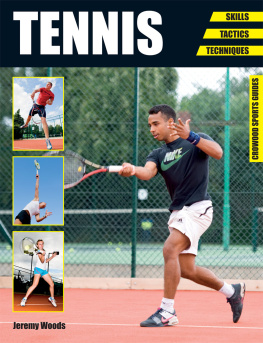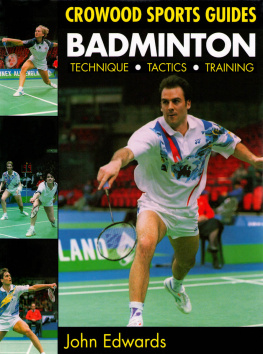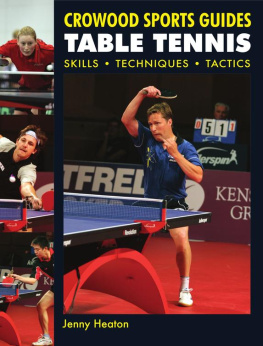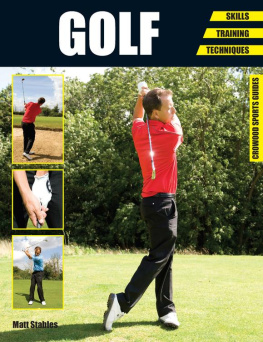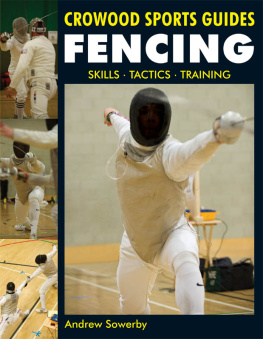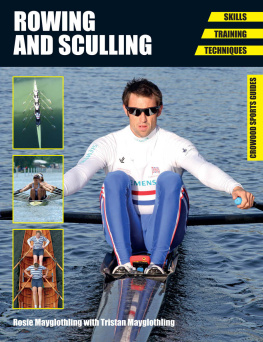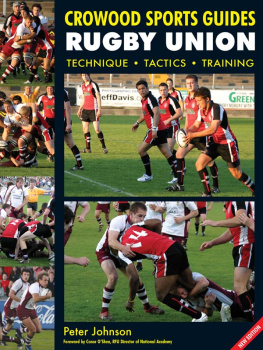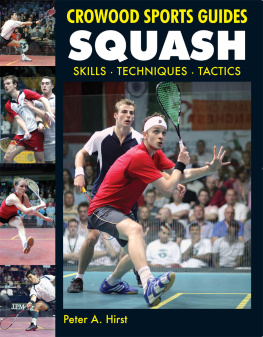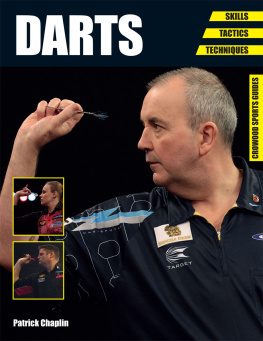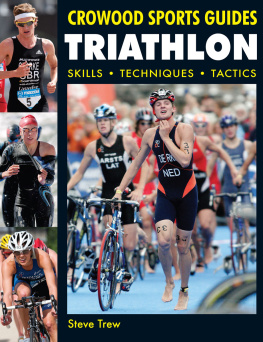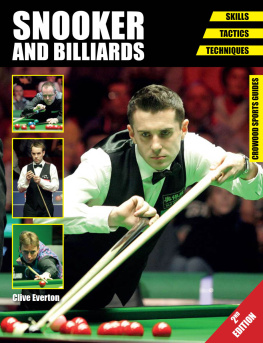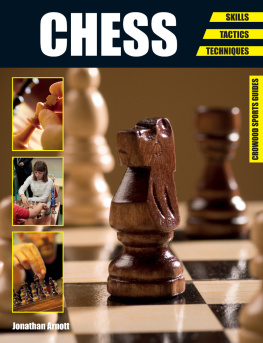

Jeremy Woods

THE CROWOOD PRESS
First published in 2014 by
The Crowood Press Ltd
Ramsbury, Marlborough
Wiltshire SN8 2HR
www.crowood.com
This e-book first published in 2014
Text, illustrations and photographs The Crowood Press 2014
All rights reserved. No part of this publication may be reproduced or transmitted in any form or
by any means, electronic or mechanical, including photocopy, recording, or any information
storage and retrieval system, without permission in writing from the publishers.
British Library Cataloguing-in-Publication Data
A catalogue record for this book is available from the British Library.
ISBN 978 1 84797 749 6
Acknowledgements
The author and publishers wish to thank the following for their kind permission to reproduce their photographs in this book: Lauren Hamilton, Michaela Knepsl, Sasha Philbert and Dominic Tripp. Thanks also to Westside LTC, London SW19 for the use of their courts and to The Racket Specialist Shop, London SW19.
Photographs by George Powell
Dedication
To Ava and Amy (sorry for the wait!)
Throughout this book, the pronouns he, him, and his have been used inclusively and are intended to apply to both males and females. Similarly, the right-handed player is used as the model for teaching technique for reasons of consistency and clarity (apologies to all left-handers!).
CONTENTS
INTRODUCTION
The great thing about tennis is that it is genuinely a sport for all whether you are six or sixty, male or female, have a lot of time to put into the game, or just have time for an occasional hit. In the same way, this book is intended to provide something of use for all tennis players, from the beginner just starting out in the game, to the committed player wishing to improve to his fullest potential.
Why is it that the game provides so much enjoyment for so many people in so many different countries and cultures? Tennis (or something very like it) has been around a long time, so its fascination for many is beyond doubt. The Roman wall paintings of Themistocles, dated around 500BC, depict athletes playing something remarkably close to the game, and the word tennis itself can be traced in English writings to the year 1399 (John Gower: In Prise of Peace). Obviously, the fundamentals of striking a ball with a racquet were intrinsically popular before Lawn Tennis itself was introduced to the UK in 1873 by Army Major Walter Clopton Wingfield, who called it by the (thankfully short-lived) name of Sphairistike. Perhaps the answer lies in the fact that the challenge exists just as much in ones mastery of the ball as it does in the mastery of an opponent or in winning.
Like golf, we all have improvement to strive for, irrespective of our achievements in the game. The Grand Slam title winner still strives for improvement in technique that he or she knows can still be achieved, in the same way as the beginner strives to develop a consistent backhand that will keep the ball in play. The variables in tennis all provide a a tantalizingly close, but still elusive challenge. The ball, your opponent, the court surface, your level of fitness, the wind, your stamina, the spin on the ball, the pace of your shot, and so on all combine to make the superficially simple game of tennis more like an exercise in three-dimensional chess!
Yet, marvellously, the game remains approachable by all, and not just by the top athlete or the supremely talented. I hope this book improves your performance and enjoyment of the game, no matter what your current standard might be, and I wish you good luck in a sport you can bank on enjoying for the rest of your life.

A page from the UK Army and Navy Stores Catalogue dated 1897, advertising early tennis bats and court equipment.

CHAPTER 1
THE RULES OF THE GAME, SIMPLIFIED
| The object of the game, which can be played between two or four people, is to put the ball into play over the net, bouncing it within the court boundary lines in such a way that your opponent cannot return it similarly over the net into your half of the court. |
| The ball may not bounce twice before being returned, but it can be volleyed (hit before the bounce) except on service returns. |
| The servers score is always called first. Zero is referred to as love, the first point as 15, the second as 30, the third as 40. Thus, if the server loses the first point, it is love-15. If he loses the second also, it is love-30, etc. If the score reaches 40-all, it is referred to as deuce. The next point after deuce is referred to as advantage-player X. The next point will thus be either game-player X, or it will revert to deuce, as a game must be won by two clear points. |
| A player who first wins six games wins a set, except that he must win by a margin of two clear games. Matches are normally the best of three, or sometimes five, sets. |
| Tie-break games were introduced to beat the deadlock caused by strong servers with the resultant marathon matches. They normally take place at 6 games all, except when the final set, or what may be the final set, is taking place. The player who was due to serve next starts by serving the first point; his opponent then serves for the second and third points, and this pattern continues with each player serving for two points at a time. The first player to win by 7 points (provided its by a 2-point lead) wins the set. At every multiple of 6 points, the players change ends, in order to share the benefits or disadvantages caused by sun and wind, etc. The player who serves first in the tie-break is considered to be using his service turn, so when play resumes in the next set with normal scoring, his opponent serves first. In some tournaments, a champions tie-break may be played. This follows the same format as a regular tie-break, except the winner is the first to 10 points with 2 points clear. |

Court layout.
| To serve, the server stands facing his opponent behind the baseline and to the right of the centre mark. He then places the ball into the air and strikes it, before it bounces, over the net and into his opponents diagonally opposite serving box. The server gets two goes at serving each point. If he fails, it is called a double fault, and he loses the point. If he strikes a serve that his opponent cannot even reach, its called an ace. If the ball touches the top of the net on the service and still drops in, its called a let, and the server has another go. If the servers foot touches the line or the inside of the court before he hits the ball, its called a foot fault. Service points are played alternately from each side of the centre mark, diagonally across court. At the end of each game, the opposing player becomes the server. |

